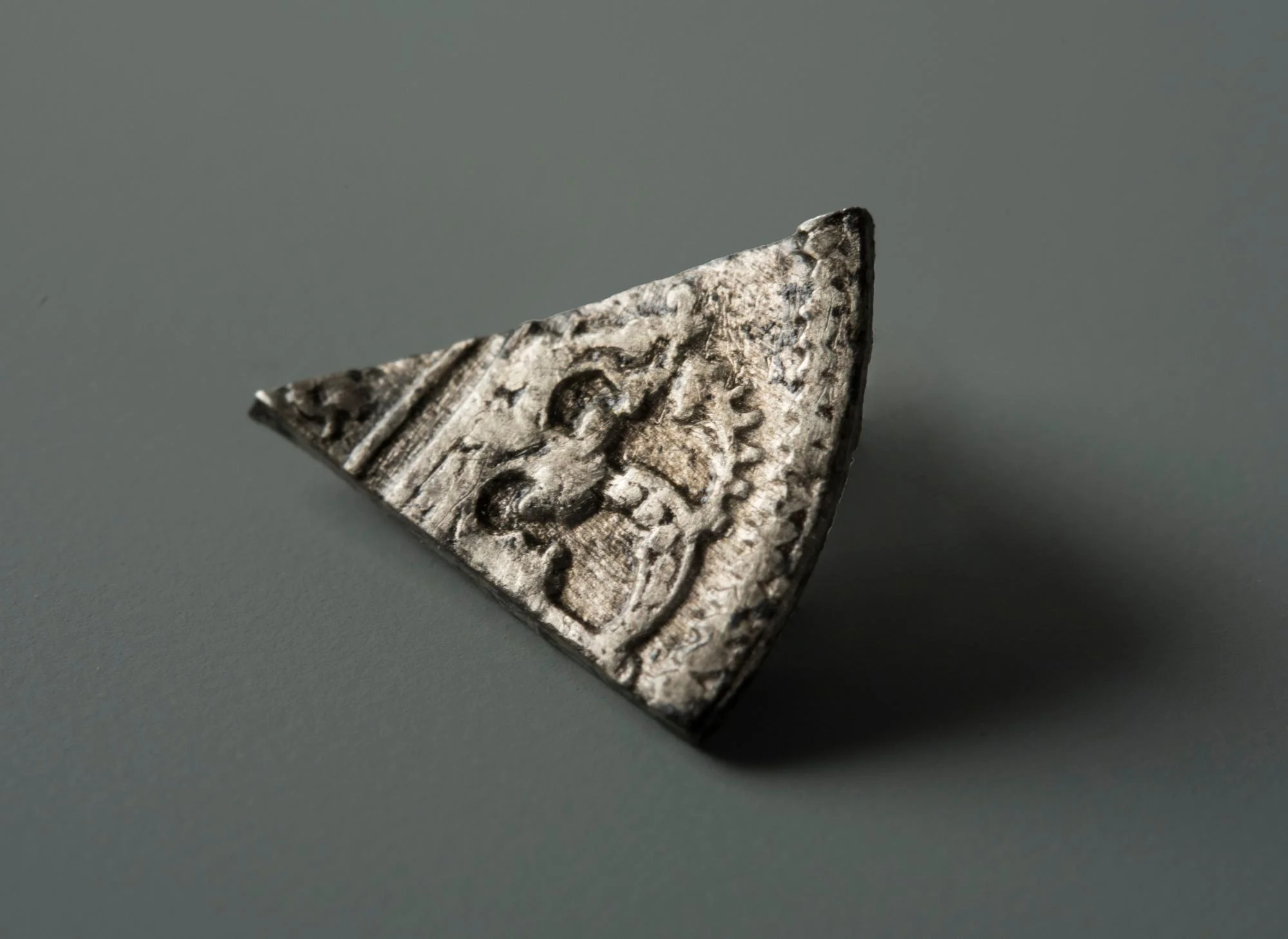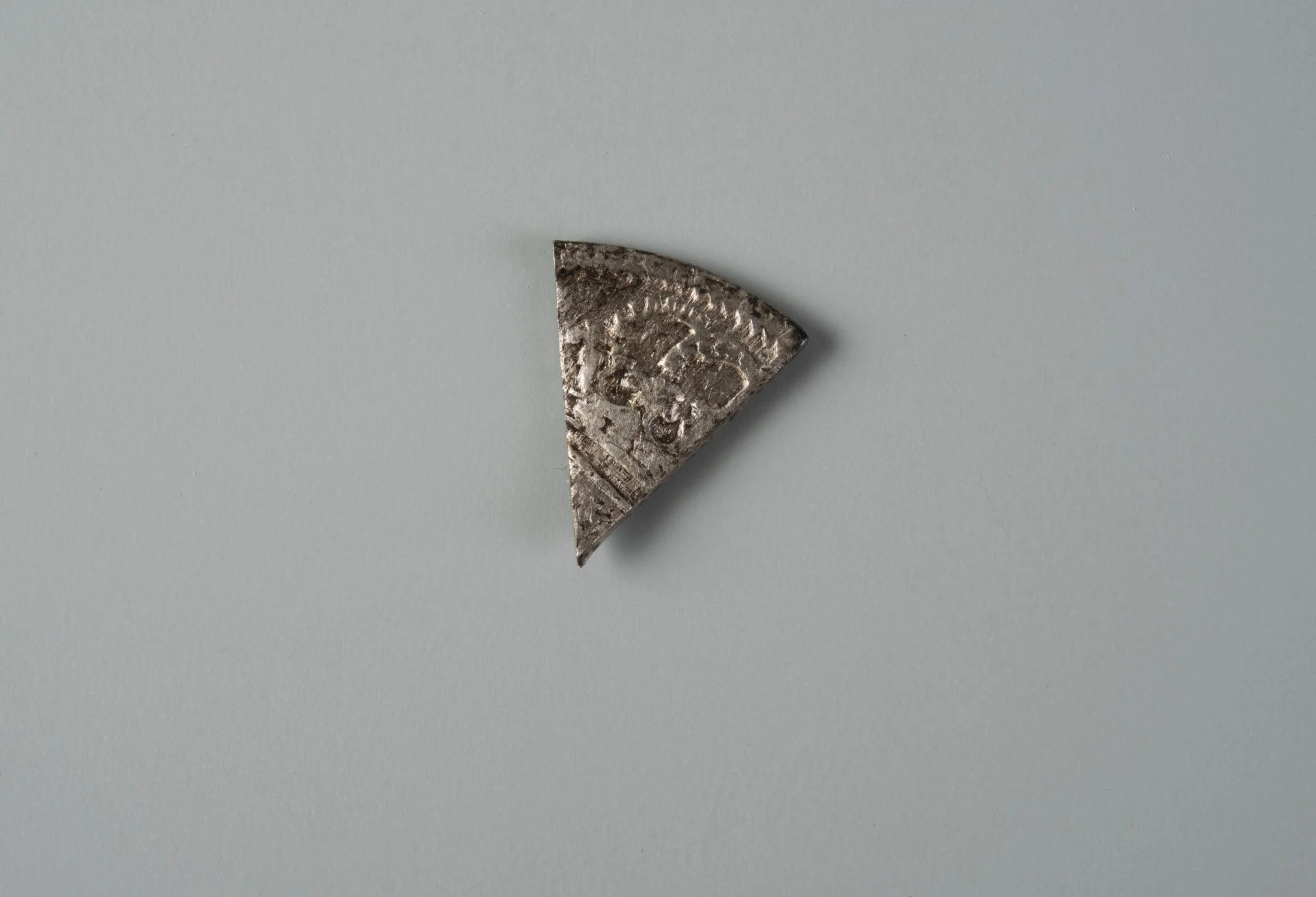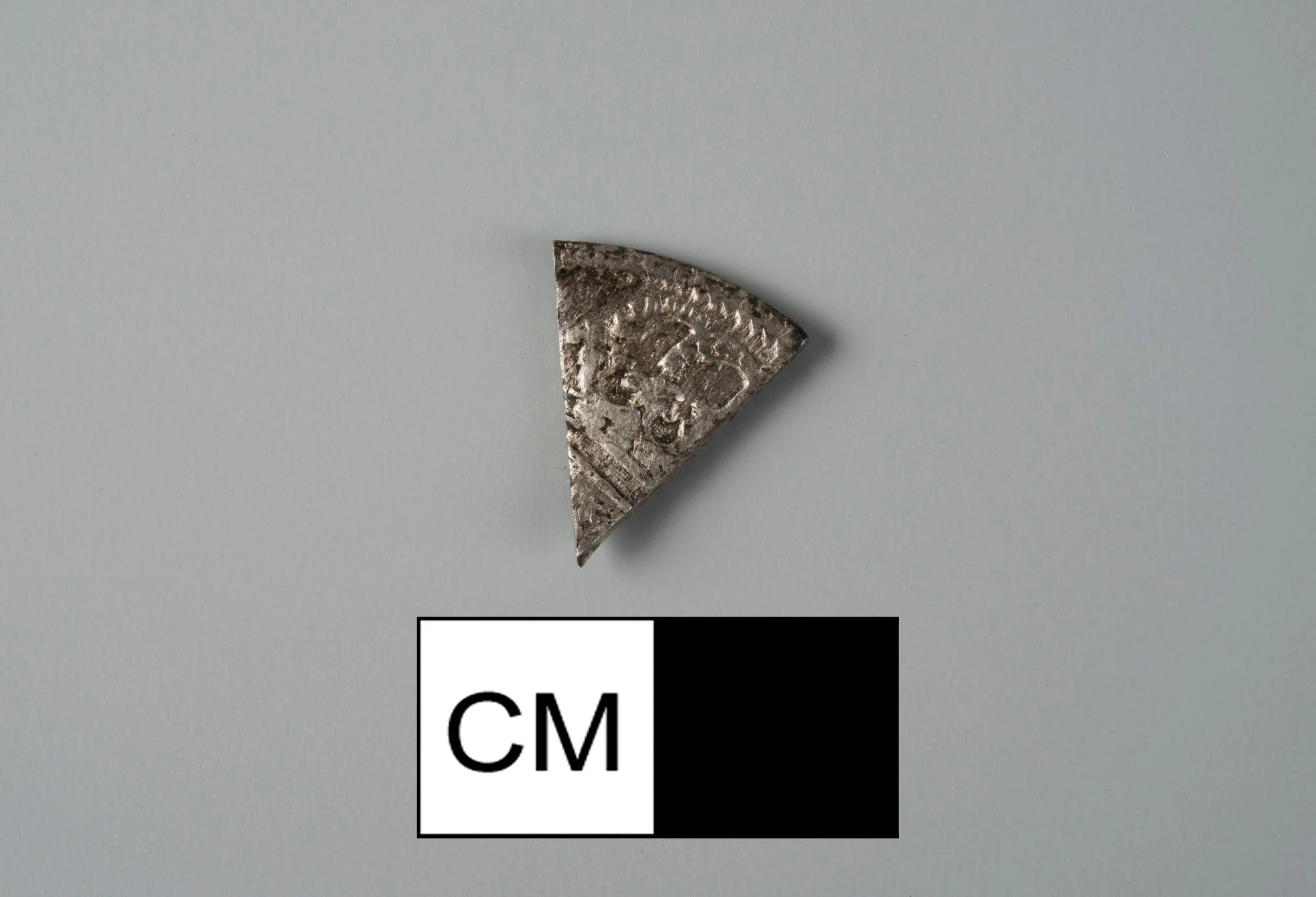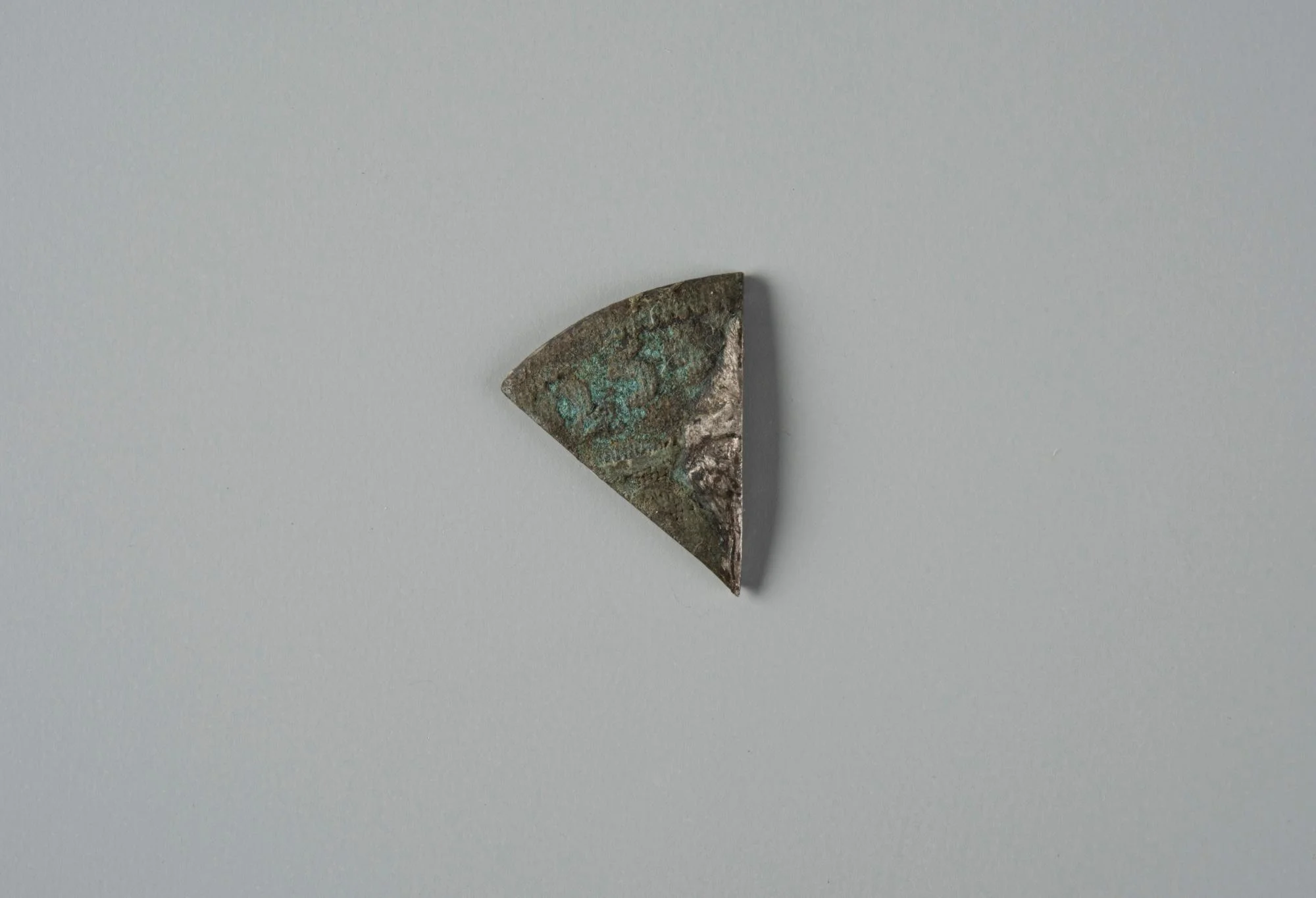Notes
This wedge of silver is a Spanish 2 real coin that has been cut into a 1/8th portion. Just visible on the piece are the numbers “25,” and small fragment of a crown surmounting a shield bearing the royal arms, indicating the coin was minted in 1725 during the reign of Phillip V. Comprised of pure silver, the value of these coins was tied to their weight, so smaller change could be made by cutting larger denominations. The milling lines, just visible along the coin’s edge, were a safe guard against illicitly tampering with the silver weight, and thus value, of each coin as shaving or cutting along the edge would result in the removal of these marks. Spanish silver coinage circulated throughout eighteenth century America, which was always short of British or American coinage.
While it might be surprising, in certain times and places, a few enslaved individuals were able to earn cash on eighteenth century plantations. At Mount Vernon, individuals did sell produce and small livestock, raised in garden plots allotted the enslaved community by Washington. Other individuals were able to acquire and sell wild food stuffs gathered or hunted. Markets for these goods included George Washington, himself, in some cases, and Sunday markets in in Alexandria by the late eighteenth century. Such cash earnings provided a modicum of economic choice for enslaved individuals and families, allowing them to acquire items of their own choosing. It is important not to forget, however, the overwhelming imbalance of economic and legal power held by planters.
Object Type
Has it Been Conserved?
Yes
Where Was It Found?
Project Site: House for Families [more details]
Material
Manufacturing Technology
Form
Completeness
Date
1725
Country of Origin
Dimensions
11.12mm x 1.22mm x 13.15mm (W x H x L)
Illustration shows object in comparison to the size of a quarter
Weight
0.6 gram(s)
Object Number
1840590
DAACS Number
1840590
Project: House for Families
The structure identified as the “House for Families” on the 1787 Vaughan plan likely housed the majority of the enslaved population living at the Mansion House Farm for much of the second half of the eighteenth century. The building was in existence from circa 1760 until it was demolished in late 1792 or early 1793. The archaeological evidence for the structure consisted of a brick-lined storage cellar (44FX762/40-47) measuring roughly six feet by six feet. Historically the cellar served as a handy trash receptacle once it ceased to be used for its original storage function, and through extensive excavation has yielded an extremely rich assemblage of household refuse. The analysis of these remains offers the opportunity to study important aspects of the daily lives of Mount Vernon's enslaved community.
See All Objects From this Dig



 All Other Artifacts
All Other Artifacts